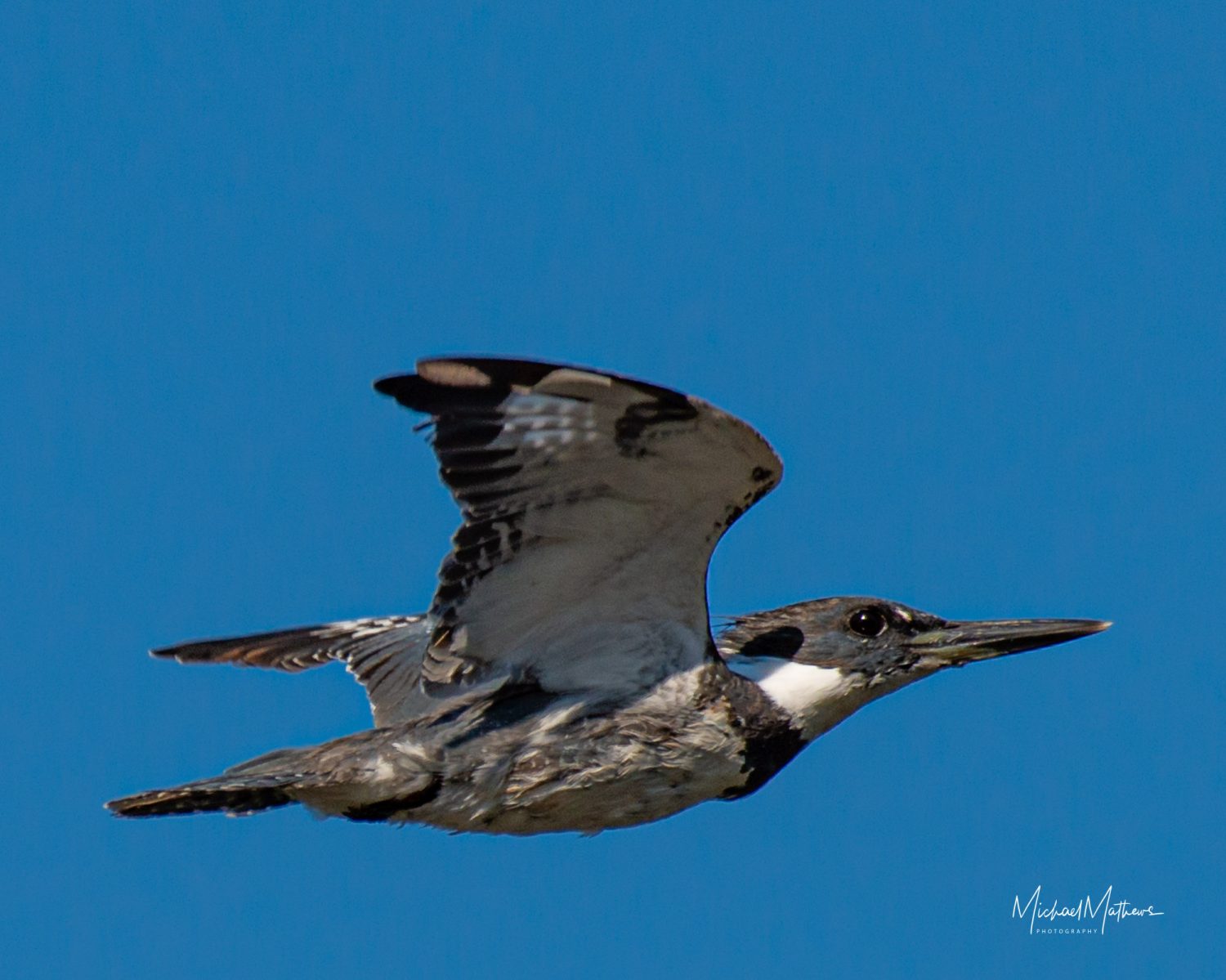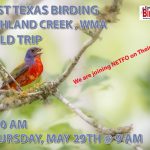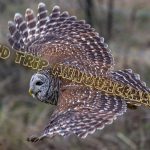
Birding in Northeast Texas
The following was written largely by Mike Dillon of Marshall Texas, (except where indicated otherwise) and is based on information compiled by the Northeast Texas Field Ornithologists (NETFO). Bird checklists of several areas are available. All State Parks charge admission without a Texas Parks and Wildlife Department Conservation Passport.
Camp Tyler
Camp Tyler is on the west shore of Lake Tyler, southeast of the town of Tyler. From the intersection of Farm Road 848 and Spur 248 in Tyler, take 848 south 4.5 miles, then turn left on McElroy Road (County Road 2127). Go 0.6 miles and turn left into Camp Tyler. Alternatively, from the intersection of Highways 848 and 346 in Whitehouse, take 848 north 2.7 miles and turn right on McElroy Road, go 0.6 miles and turn left into Camp Tyler. As you drive past the fields and into a wood, you will pass the Camp Ranger’s residence on your left. The road goes up a small hill that ends in a parking area by the main office. This is 0.8 miles from the entrance. Please check in with the Ranger or at the main office before birding. All visitors must sign an Assumption of Risk form. You can call ahead to the Camp Ranger, Mr. Alan Byboth, at 903-510-6400 or -6440 to let him know that you are coming.
After checking in, you can walk from the parking lot by the main office on well-marked paths that lead through a mixed deciduous/pine wood that borders the lake. You can also drive back along the main road out to the fields and park in front of the buildings to the right of the road, 0.1 miles from the entrance to Camp Tyler. A path from the barn leads into some fields. On the side of the road opposite the barn, another path leads through fields, shrubbery, and around small ponds, eventually winding up at the parking lot by the main office in the wood.
More than 220 species have been recorded at Camp Tyler, and many birds that are rare in east Texas have put in brief appearances here, including Roseate Spoonbill, Cinnamon Teal, Crested Caracara, Peregrine Falcon, White-winged Dove, Golden-winged, Palm, Cerulean, Worm-eating, and Swainson’s Warblers, Blackpoll, Lazuli Bunting, American Tree Sparrow, and Smith’s Longspur. In winter, the grassy areas and shrubbery are excellent for sparrows. Twelve species of sparrows occur regularly and Grasshopper and Henslow’s Sparrows occasionally spend the winter. Many ducks and raptors also winter here, including Greater Scaup, Bald Eagle, and Osprey, and a Northern Goshawk wintered in 1997-98. In the spring, migrants pass through Camp Tyler in fair numbers. Twenty-nine species of warblers and all seven vireos that occur in east Texas have been recorded here. Breeding birds include Wood Duck, Pileated and Red-headed Woodpeckers, Prothonotary Warbler, Yellow-breasted Chat, Summer Tanager, Painted Bunting, Blue Grosbeak, and Orchard Oriole.
Contributed by Camp Ranger, Alan Byboth.
Longview area
Cargill Long Park is a three-mile long National Recreational Trail beginning at Hollybrook Drive just west of US 259 behind a gas station. The trail passes through wooded and suburban backyard habitats. A pair of Wood Thrushes is sometimes present here in the late spring and summer.
Sabine River bottomland habitat south of Longview can be explored by driving 2.3 miles south on Estes Parkway (Texas 322) from I-20 to the River bridge. At the south end of the bridge, turn left into the public boat launch area and park. While following fishermen’s trails along the river, watch for Barred Owl, Red-shouldered Hawk, Wood Duck, and Pileated Woodpecker in this bottomland hardwood forest.
Lake Cherokee has only two spots on public property to view the lake. These are at the spillway area on Texas 149 and the FM 2011 bridge which crosses the west end of the lake. Watch for Bald Eagles, ducks, gulls, White Pelicans, grebes, Anhinga, and Double-crested Cormorant.
Brandy Branch Cooling Reservoir is between Longview and Marshall south of I-20 and also has limited access. Exit I-20 at FM 3251 and go south. Watch for the public boat ramp sign on the left just before you reach the intersection with FM 2625. Turn right to the ramp. The area has a brushy habitat which is sometimes attractive to migrants. Return to the highway, go right and turn right on FM 2625. At the dam area watch for a gate where you can pull off and scan the south end of the lake. Red-headed Woodpeckers are often found in dead trees in and around the lake.
Martin Creek Lake
A list of 150 species has been compiled for this lake and is available at the State Park. headquarters. Access is from the state park and numerous viewpoints from the roads circling the lake. Martin Creek Lake State Park can be reached by taking Texas 43 south from I-20. South of Tatum on Texas 43, turn left at 3.7 miles on CR 2183 to the park entrance. Ducks and other water birds may be viewed on the lake from the boat ramp and from a trail around the small island. The 1.5 mile hiking trail at the Bee Tree camping area takes you through woods.
To take the roads around the lake, exit the state park, turn left on CR 2183 and left again on Texas 43. From the CR 2183 and Texas 43 intersection, drive 1.1 miles and take a left on FM 2658. Stop at the lake spur to scan for water birds and shorebirds. Bald Eagles and Ospreys can sometimes be seen on these lake spurs in fall, winter, and spring. At 2.7 miles, turn right on CR 2144 and left on CR 2145 at 3.8 miles to perhaps the best spot around the lake. View both sides of the road from the levee, watching for Red-headed Woodpeckers and woodland birds, then continue on the road (which changes to CR 391) to rejoin FM 2658 at 6.5 miles. Turn left on FM 1251 and stop at the bridge. At 10.0 miles, turn left on FM 3231 and stop along this highway at the places to view the lake. A short side trip at 11.6 miles to Sugar Hill Cemetery on CR 242 can be productive. FM 3231 crosses the lake outlet and then rejoins Texas 43 to complete the tour. Before reaching Texas 43, at 19.4 miles, Harmony Hill Road (CR 2183) is a road with good habitat to return to the State Park. Tree Swallows are very rare breeders in northeast Texas, but they have been found in summer at Martin Creek Lake.
Lake Murvaul
Lake Murvaul is southwest of Carthage. To reach the lake, take Texas 315 southwest from Carthage. At Clayton, FM 1970 leads south to the east end of the lake. FM 1234 leads to the dam. There is good birding from the dam and below, but do not drive or walk on the dam without checking at the caretaker’s house near the dam. The trees all around the picnic areas are good as well.
To reach another area of the lake, return to Clayton, turn left on Texas 315, follow it and turn south on FM 1971. Drive south until you reach a park on the left side of the road just before crossing the lake. This park is very good for seeing the main body of the lake, and is particularly good for viewing Ruddy Ducks and Greater and Lesser Scaup in the winter. Also be sure to check for Oldsquaw, Scoters, Canvasbacks, Bald Eagles and Common Loons.
Sabine Mining Company and Pleasant Hill Church/Cemetery
If you like wide-open spaces, the reclaimed strip-mined area south of Hallsville is a good place to bird. Mining is complete in some areas and the land is in varying stages of reclamation. Habitat includes replanted grass and clover or pine plantations with the inevitable weeds and other native plant species creeping in. Keep in mind that the landscape changes from year to year. A spotting scope is helpful for identifying distant birds.
Spring and summer are good times to see many Dickcissels nesting in the tall grass, weeds, and clover. The wooded area around the church is a good place to watch for migrants. Fall and winter are the most exciting. Expect Northern Harrier, Red-tailed Hawk, American Kestrel, Short-eared Owls, Great Horned Owls, and an occasional Merlin. Several species of sparrows winter in the various types of grass, weeds, and clover.
Pleasant Hill Church and Cemetery were preserved as an “island” in the midst of the mined area. A 1.6-mile access road gives the best opportunity for birding. To get there, exit I-20 at the Hallsville (FM 450) exit. Take FM 450 south about two miles and turn left on FM 968. In about two miles, look for the “Pleasant Hill Cemetery” sign and turn right on Hut Horton road.
Contributed by Eddie Ray
September 28, 2001
Click here for photos of Sabine Mining/Pleasant Hill area
Caddo Lake
Perhaps the most famous natural area in Northeast Texas, Caddo Lake is a place of great scenic beauty. The lake is best viewed by canoe or boat which can be rented at the State Park or from several marinas in the Uncertain, Texas, area. Caution: Take a map of the lake and a compass since it is easy to get lost on the lake, or better yet, take one of the many guided lake tours available in the area.
Since 1980, at least 250 bird species have been recorded at Caddo Lake. A bird checklist is available online at the “Birds of Caddo Lake” website. To reach Caddo Lake NWR (in Karnack), Caddo Lake State Park, and Uncertain, take Texas 43 northeast from Marshall and follow the signs.
Caddo Lake National Wildlife Refuge — From Texas 43 turn east on Old Hwy 134 to Karnack. On October 21, 2000, 7172 acres of the former Longhorn Army Ammunition Plant property were transferred to the U.S. Fish and Wildlife Service for the Caddo Lake National Wildlife Refuge, and in 2009 the Refuge was formally opened to the public.
Caddo Lake State Park is located on FM 2198, half a mile east of TX 43. For birders, the terrain around Mill Pond and along Big Cypress Bayou is generally productive. Watch the sky here for Anhinga, Mississippi Kite and assorted herons and egrets in summer. Watch also for Sharp-shinned (in migration and winter), Cooper’s and Red-shouldered Hawks; Yellow-billed Cuckoo (summer), Barred Owl; Fish Crow; Red-headed, Hairy, Pileated and other woodpeckers; Winter Wren (winter) and assorted vireos and warblers (most in spring, summer, and fall). Openings in the canopy, such as at the boat ramp parking lot, offer excellent opportunities for viewing birds. The area around the State Park’s entrance and headquarters has produced Brown-headed Nuthatch, Pine Warbler, Painted and Indigo Buntings, Eastern Bluebirds and other thrushes, Northern Bobwhite, and Chuck-wills-widow. Greater Roadrunner has been spotted around the headquarters and maintenance buildings. During the breeding season, some of the more visible and vocal songbirds in the park include Wood Thrush; Acadian and Great-crested Flycatchers; White-eyed, Yellow-throated and Red-eyed Vireos; Northern Parula; Yellow-throated, Pine, Black-and-white, Prothonotary and Kentucky Warblers; and Summer Tanager.
From the State Park, follow FM 2198 east to Uncertain, where a few commercial establishments offer views of the lake. One of these, Crip’s Camp, overlooks a shallow slough called Goose Prairie. This is a good spot to find wading birds, Wood Ducks and other dabbling ducks, and occasionally a few shorebirds (spring and fall) and Common Snipe (winter), when the water level is low and mudflats are exposed. A scope is helpful here if you have one. In summer Mississippi Kites soar over Crip’s Camp regularly and probably have nested nearby. Watching the sky over Crip’s will often be rewarded with Anhingas in summer, Bald Eagles in winter, and Sharp-shinned, Cooper’s and Broad-winged Hawks in migration. Also during migration, watch for Bank, Tree and Northern Rough-winged Swallows here. Listen here for the distinctive voices of Barred Owls, Red-shouldered Hawks, Pileated Woodpeckers, and Fish Crows; and check the trees and shrubs here for passerines.
Johnson’s Ranch Marina, Bayou Landing Restaurant, and Shady Glade Marina, on Cypress Drive in Uncertain, also offer views of the water, as well as parking lots where one can get off the road to look around. Inca Doves, Orchard Orioles, Northern Parulas and Yellow-throated Warblers breed regularly in Uncertain and elsewhere around the lake. In winter, check the flocks of Red-winged Blackbirds and Common Grackles for Rusty and Brewer’s Blackbirds.
Return by way of FM 2198 to TX 43, and go north on TX 43 about 5 1/2 miles. Turn right (northeast) on Johnson Road (Marion County Road 3416). Johnson Road passes large clear-cut areas in various stages of regeneration. Around the intersection with Andrews Road (MC 3419), listen and watch for Prairie Warbler, Yellow-breasted Chat, Common Yellowthroat, etc. in summer; and Eastern and Spotted Towhees, plus several species of sparrows in winter. American Woodcocks have been found here at dusk in winter, displaying over the short, scrubby open areas.
Caddo Lake Wildlife Management Area — Continue along Johnson Road to Greening Road (MC 3420). The Greening Road turnoff is approximately two miles down Johnson Road from TX 43. An oak tree stands in the intersection. Turn right (southeast) here and follow the dirt road about 0.6 mile to a swampy area with many dead snags on the left side of the road. A yellow State Park and WMA sign may be visible on one of the trees near the road. This general area can be quite productive for a wide variety of wetland and woodland species. Watch and listen for Northern Parula; Yellow-throated, Prothonotary, Kentucky, Hooded and Swainson’s Warblers; Louisiana Waterthrush and American Redstart (in spring and summer); plus Barred, Eastern Screech, and Great Horned Owls; Wild Turkey; Rusty Blackbird (winter) and seven species of woodpecker. Access to the WMA, even for “non-consumptive” purposes, is by permit only. If you venture beyond the county roadway, you must have with you one of the following: a Texas Conservation Passport; an Annual Public Hunting permit; or a Limited Public Use permit.
Walker Farm — Southwest of the WMA, across TX 43, the Walker farm has hosted bird-banding activities since September 1996. So far, 129 species of birds have been recorded on the farm and 67 species have been banded, including eleven warbler species, Bewick’s Wren, Painted Bunting, Le Conte’s Sparrow, Grasshopper Sparrow, and a surprising fifteen Henslow’s Sparrows. For more information about the banding activities and other Caddo Lake birding locations and resources, visit the “Birds of Caddo Lake” website at http://members.tripod.com/caddobirds .
Contributed by Dorothy Metzler
Revised August 2003
Wright-Patman Lake
Located south of the city of Texarkana on US 59, this large impoundment is ideal for gull enthusiasts. When the dam is generating electricity in the winter, hundreds (and sometimes over a thousand) of Bonaparte’s and lesser numbers of Ring-Billed and Herring Gulls congregate below and behind the dam. Black-headed, Little, and Laughing Gulls have been recorded here. From the US 59 bridge across Sulphur River, drive north 1.4 miles on US 59, and turn west at the Wright-Patman Lake sign. Follow the road to the spillway, or stop at the first turnout (two closed roads) and bird along the closed roads. After stopping, continue west, then turn south to parallel the dam. Oak Park below the dam can be birded. The marshy scrub area below the dam may be entered on foot at pull-offs 0.2 and 0.7 miles south of the entrance ramp to the top of the dam. Past the marshy scrub is the dam spillway. Park and bird the area if gulls are present. Gulls can also be found resting on the back! water at the overflow south of the spillway. To reach the overflow and backside of the dam, follow the road past the spillway and work up to the top of the dam. Park at the headquarters parking area and walk to the south fenced area to view the overflow. Also, look at the main body of the lake above the dam start from the parking area. For more views of gulls east of the spillway, from the Sulphur River bridge on US 59 take the first crossover north of the bridge to the west and drive past the boat ramp.
To reach the area behind the dam, drive north on the dam and at the north end, turn left twice to head south on the road to Elliott Bluff Boat Ramp. Use the pullouts at 1.4 and 1.8 miles to walk to the lake, then continue on to the boat ramp. Return to the north end of the dam and turn west for more views of the lake from Intake Hill (0.5 miles), North Shore Park (1.3 miles), and Clear Springs Campground (2.0 miles). Two parks on the south end of the dam can be reached by returning to US 59 and driving back south. After the Sulphur River bridge, take the first turn to the west and follow the road to Piney and Rocky Point Parks.
Atlanta State Park gives one of the best views of waterfowl on the lake, but the other sites mentioned below also offer viewing opportunities. From the Sulphur River bridge, follow US 59 south 3.6 miles to CR 3660, turn west, and follow the road 5 miles to Cass County Park. Drive 10.4 miles to Queen City and at the first traffic light, turn west on FM 96 and FM 1154 to Atlanta State Park (9 miles). Inside the park, drive to the boat ramp on the west end and to the picnic area for the best views of the lake. Another boat ramp on the west end also offers lake viewing. The Nature Trail takes you through mixed pine and hardwood forests.
After leaving the park, turn west (right) onto FM 96 (start mileage at this intersection), turn right on FM 2791 at 1.6 miles, then right again on CR 2116 at 3.3 miles. Follow CR 2116 6.6 miles to Jackson Creek Park. Bird the park and the lake. After returning on CR 2116, follow FM 2791 south to Texas 77 and turn west. Follow Texas 77 to Douglasville and turn north on Texas 8. At CR 2459, 3.3 miles north of the Texas 77 and Texas 8 intersection, turn west to Overcup Park and bird this area. Return to Texas 8 and drive to Malden Lake Park on the north end of the Sulphur River bridge. This completes the Wright-Patman Lake tour.
Lake O’ the Pines
Highways US 259, FM 450, FM 726, FM 729, and Texas 155 encircle the lake. Some of the best spots to view the lake are listed below, but watch for birds along the way to these stops. Starting from Ore City on US 259, take FM 450 east (0.0 miles at that intersection). From Ore City, views of the lake can be made from Sunrise Cove (roads at 0.7 and 1.4 miles), Pine Hill Ramp (turn at 1.9 miles), and at Pop’s Landing (turn at CR 4610 at 3.8 miles). After returning to FM 450, go left and turn left on FM 726, 7.1 miles from Ore City. At Jackson, 10.3 miles, take FM 1968 to the left, turn right at the T, and follow the road to the right to Island View Marina (3.3 miles from FM 450). To view the lake, take the dirt roads to the right past the houses and stop at the grassy area by the lake. Back on FM 726, continue east to the dam. Stops can be made at Tejas Ramp or Brushy Creek Park (walk in if the Park is not open). Lakeside Park behind the dam is one of the best areas for viewing the lake. In the winter the gate past the entrance is locked, but it is worth the effort to walk the road through the woods to the lake. A fee is required for entrance, and one may purchase a yearly pass or pay by the day.
Across the dam, check out the Overlook. From the north end of the dam, go north on FM 726 about one mile, then turn right on a gravel road. This gravel road leads through areas of open pine forest with substantial grass growth. These areas hold Bachman’s Sparrows, which can be heard singing from mid-March through the summer months. Returning along this road, continue north on FM 726 to FM 729. Turn left on FM 729 (2.5 miles from the Overlook) and stop at Johnson Creek Park (7.7 miles) and Alley Creek Park (10.0 miles) to scan the lake. If you have a high-powered scope, Alley Creek is particularly good at sundown for watching the ducks settle down across the lake for the night. From Alley Creek, continue on FM 729 until you see a sign for Mim’s Chapel. Turn left here and follow the road straight to the lake. There will be a public access boat ramp at the lake. This area is great for using your scope. The view of the lake is over an area with many dead trees standing ! in the water. Going back to FM 729, continue to a sign for Oak Valley and turn left. Drive down this road till you reach the lake. This also is a very good place to use a scope. Continue on FM 729 to Texas 155 and turn left, cross the lake and stop at Cedar Springs Park (19.9 miles from the Overlook), then drive on to intersect with US 259.
Brown-headed Nuthatches are unusually common in the large pine trees found all around Lake O’ the Pines. Besides most of the area’s ducks, such as Lesser and Greater Scaup, Common Goldeneye, Hooded Merganser, and Bufflehead, rarities found at LOP include Oldsquaw, all three Scoters, Barrow’s Goldeneye, Red-necked and Western Grebe, and Red-throated, Pacific, and Yellow-billed Loons, and a murre species. Rare gulls found at the lake include Sabine’s, Thayer’s, Great Black-backed, and Laughing Gulls. Watch overhead for Bald Eagles.
Daingerfield State Park
Southeast of Daingerfield on Texas 49, this pleasant park has been the site of a fall hawk watch for a number of years. As many as 3700 Broad-winged Hawks have been seen here in a day in late September, often soaring in kettles of a hundred birds or more. Peregrine Falcons, Merlins, and Bald Eagles have also been sighted, along with more common raptors. During the last two weekends in September, a few birdwatchers may be found in lawn chairs at the end of the main road through the Park.
Lake Bob Sandlin
Lake Bob Sandlin is north of Pittsburg off US 271. Seven miles north of Pittsburg, turn west on FM 3417. Follow this road past the soccer fields (about 2.5 miles) and turn left onto the lake road. To view the lake, take the road to the right past the boat ramp or go straight ahead to the dam. Both points are good and a scope will be helpful.
In the shortgrass field near the dam, occasional longspurs and Sprague’s Pipits are found in fall, winter, and spring. The shallow water area near the field often has good numbers of ducks and, when the mudflats are exposed, shorebirds. Mottled Ducks, rare Northeast Texas residents, can sometimes be seen near the dam.
To reach Lake Bob Sandlin State Park, continue west on FM 3417 to FM 127 and turn left. At FM 21, turn south and follow the signs to the park. The lake can be viewed from the picnic area or the side of FM 21 across the lake.
Lake Fork
Known primarily as an excellent fishing lake, Lake Fork has not been birded as intensively as other lakes in the area. However, it has many of the same birds as other Northeast Texas lakes, and during the summer, Black-bellied Whistling Ducks and Neotropic Cormorants have been found. A loop tour of the lake viewing sites follows.
Beginning at Quitman, take Texas 154 north west from town. Past the boat ramp, the road crosses the lake. You can stop at the boat ramp and view the lake and then drive across the bridge and turn right at the Sabine River Authority Public Recreation Area. This is the only public park on the lake. Bird the park and also drive south outside the park fence to the grassy area to view the lake and the egret roost. Returning to Texas 154, turn right and turn right again at FM 515. At the lake crossing, pull off at either end of the bridge to view the lake. Continue on FM 515 and turn left on FM 2966. Follow this highway and stop at three lake crossings, the first with possible mud flats, depending on the level of the lake. FM 2966 ends at Yantis, so continue across Texas 154 to FM 17. Go straight when this highway intersects with FM 514 and stop at the next bridge over the lake. After this, turn left on FM 2946 for another bridge across the lake. At the intersection of FM 2946 and FM 515, turn left on FM 515 and go past the intersection where FM 17 turns south. Cross this bridge and view the lake from the east side. Return to the intersection with FM 17 and turn left towards Alba. This road crosses the lake three times before Alba is reached. To view the dam, turn left at Alba on Texas 182. The dam has no access, but below the dam there are pull-outs where the trees below the dam can be birded. Continue on Texas 182 to the lake spillway where the water below the spillway can be birded from the road area. From here follow Texas 182 until it intersects with Texas 154 to return to Quitman.











